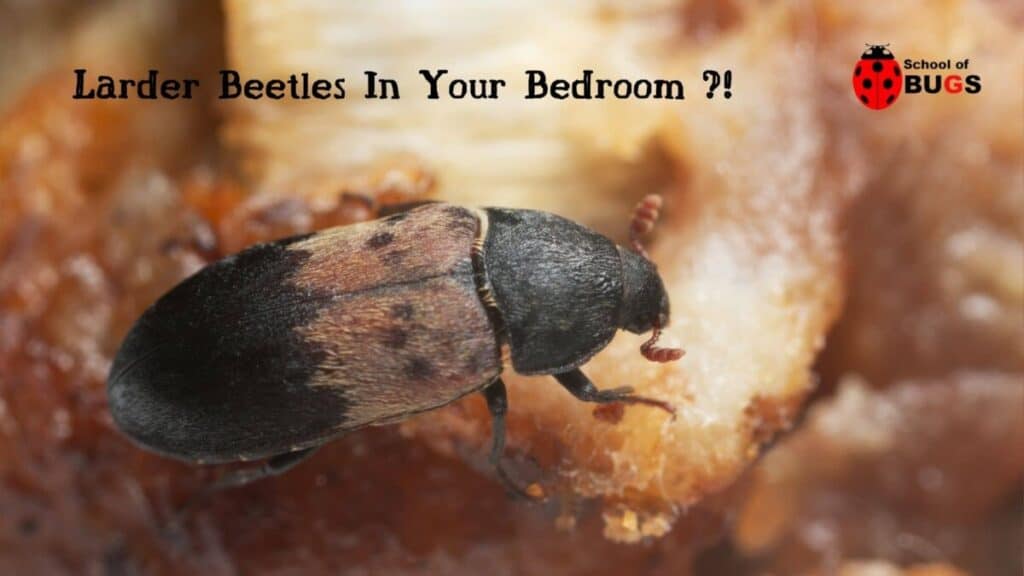
Bed bugs or beetles, what seems to be the problem? This is a frequently asked question by homeowners who wake up with rashes, welts, or other bloody signs of an insect infestation while they sleep at night.
Among the beetle candidates that regularly show up in the bedroom are the larder beetles, also called moisture beetles (Dermestes Lardarius).
As their name suggests, they love raiding the human larder, but they go beyond that.
There are other distinguishing features. What is more interesting is that their larvae cause more harm to humans physically than do adults.
Larder Beetles look Different
Unlike the reddish brown or dark brown beetles (such as flour beetles or spider beetles), larder beetles can easily be distinguished by a number of characteristics.
The adult larder beetle has a dark brown to black color, with a pale yellow band stretching across its forewings.
The band has three spots arranged in a triangular formation. The contrast in color can be stronger with certain subfamilies, such as the black larder beetle.

The size is also a key differentiator. Larder beetles can be up to 3/8 inches long, whereas the red flour beetle maxes out at 1/8 of an inch and the spider beetle at 1/5 inches.
The Larva of the Larder Beetle is Distinctive
The larva of the larder beetle stands out. It is larger than the adult and is covered in black or reddish-brown setae.
The larvae, when mature, can bore into hard surfaces such as wood, cork or plaster – they can do so to forage or to pupate.
Another distinguishing feature found in the larva of many larder beetle species is the presence of two strong, spindly, back-curved appendages on its posterior.
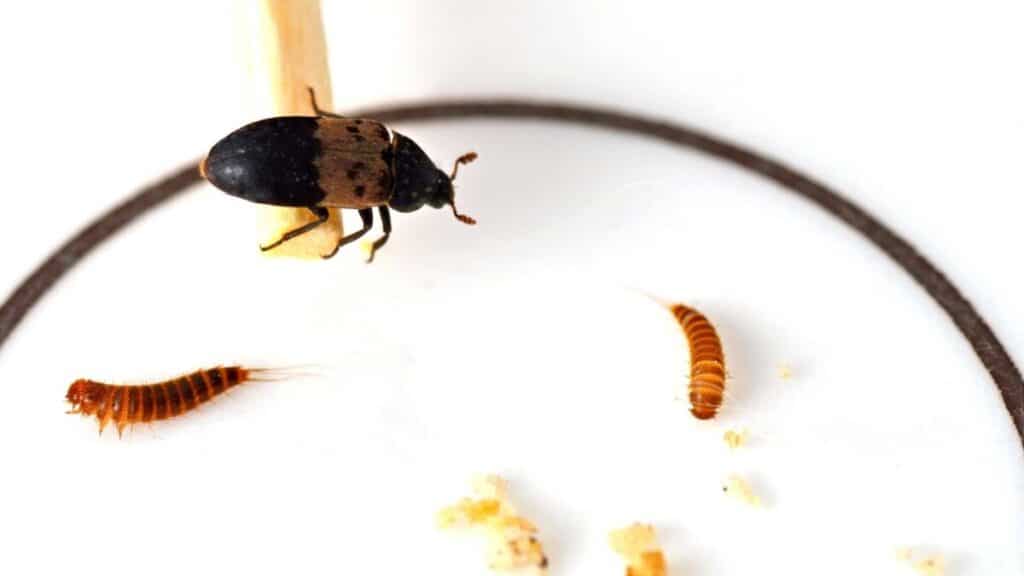
Larder beetles are strong flyers and can go to great lengths to find some of their favorite food – such as rotting meat or decaying flesh.
What Do Larder Beetles Eat?
Adult larder beetles certainly eat a lot of food that is found in the pantry, such as dried and cured meats, cheese, pet food and solid cooking fats like butter.
They tend to go after foods with high protein content, even in their choice of grains. Rotting flesh and spoilt meat are also prime fodder for them.
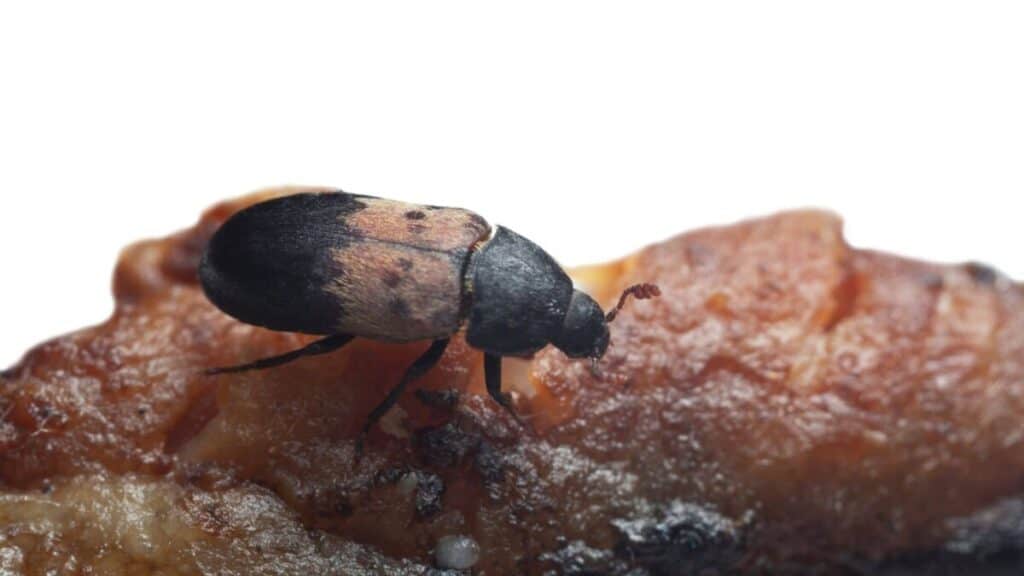
What makes them especially prone to venture into living areas is their propensity to go after skins, leather and hide.
Since they are strong fliers and can bore into surfaces to get at food, they can venture into bedrooms. Like many other beetles, they like warmth and moisture as well.
Why are Larder Beetles a Nuisance to Humans?
First off, like most other beetles, larder beetles do not usually bite (more info here). However, the bedroom could be a prime spot for them to set up their colonies.
Since they reproduce fast (as discussed here), it does not take much to turn a larder beetle incursion into an infestation.
The damage caused by larder beetles, while substantial, is usually limited to the pantry.
In addition, there are health concerns because larder beetles can feed on rotting organic substances – though this is possibly less relevant within the house, assuming that rotting meat is not lying around in copious quantities indoors.
Why then are larder beetles on the bed often mistaken for bedbugs based on how sleeping humans show telltale signs of attack?
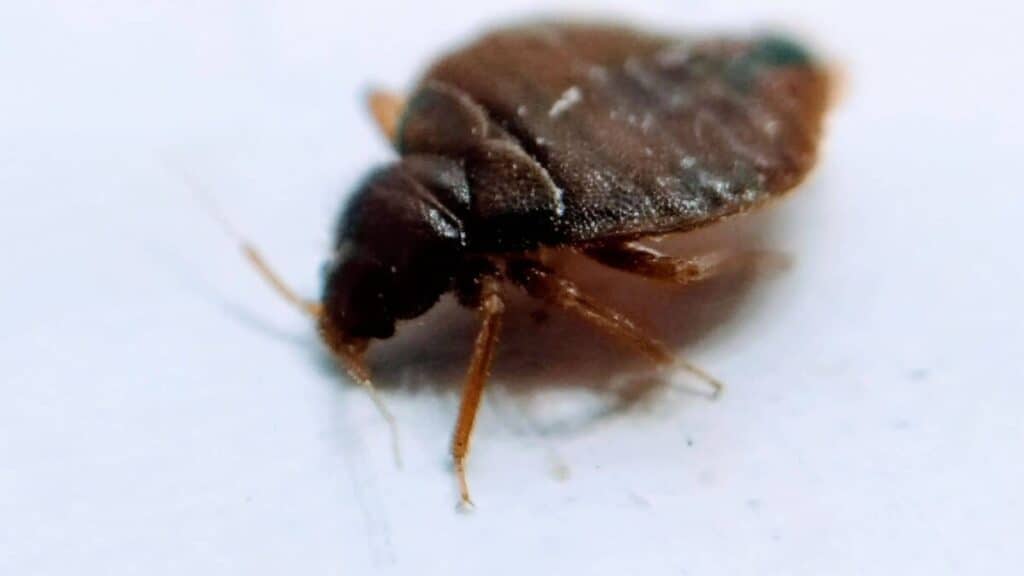
It’s Not the Adult …
Both adult larder beetle and their larvae are often attracted to the warmth and moisture around a human snuggled in bed.
Interestingly, most of the adverse reactions to these bugs come not from the adults but from the larvae.
As mentioned prior, the larva of the larder beetle are (a) bigger than the adults, (b) have spiny appendages near their backsides, and most importantly (c) are covered with bristly setae.
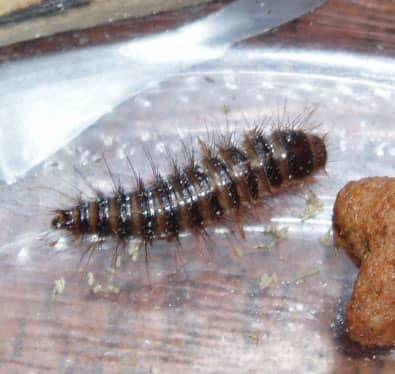
The biggest problems then arise when the busily foraging larvae start moving around your bed at night. Their setae and bristly appendages can not only cause allergic reactions and infections, but the effects can also extend to bleeding skin conditions for many.
Noticing the latter is where the mistake with the bed bugs comes in, given that the impacts look roughly the same.
How to Control Larder Beetles
Larder beetle can be controlled through some of the common means that we have described here.
As a general rule, sealing food, regular vacuuming, and dehumidifying would help. Chemical pesticides are never a good idea given the health hazards that can come up for humans.
If the residents of the house are regularly waking up with rashes, welts or lesions on their skin, it is definitely time to consult with the professionals – perhaps even more so than with the (milder) skin irritation from other types of beetles.
Since the bloody signatures are being left by larvae, it is a sure fire sign that a larder beetle infestation is about to overrun your home.
Alright, that’s it for this article, here are a few hand-selected articles that you might also find interesting reads:
The Wonderful World of BeetlesDo Dead Beetles Attract More Beetles?
Why Am I Finding Beetles In My House?
Recent Posts
Tiny Black Bugs in Bathroom NO WINGS: What They Are and What to Do!
Finding tiny black bugs in your bathroom can be uncomfortable, to say the least. Especially if they are persistent, or they appear in very large numbers, which they often like to do. When it...
Tiny Black Bugs in Plant Soil - What Are They & What To Do About It
A short horror story: You get a new houseplant. You do your best to take care of it. You’ve ensured that it has the right soil, the right amount of sun, it gets enough water. And then one day, you...

